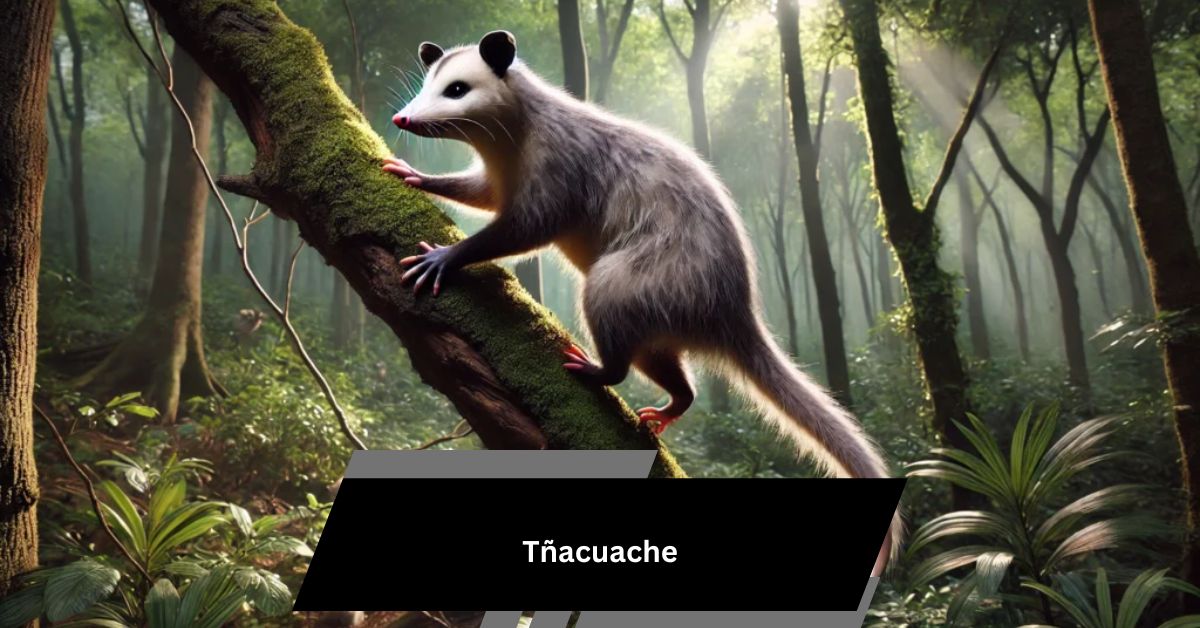The Tñacuache, a creature both mysterious and revered, holds a special place in the hearts and minds of many cultures. This fascinating animal, known for its cunning nature and adaptability, is much more than just a nocturnal wanderer. From its roots in tradition to its representation in folklore, art, and modern society, the Tñacuache continues to be a symbol of survival and cultural significance.
In this article, we’ll delve into the multifaceted world of the Tñacuache, exploring its natural habitat, cultural impact, and the stories that have kept it alive in our collective imagination.
What Exactly Is a Tñacuache?
The Tñacuache, also known as the opossum in English, is a small to medium-sized marsupial native to the Americas. Recognized by its pointed snout, prehensile tail, and a tendency to “play dead” when threatened, the Tñacuache is a creature of the night, often seen scavenging for food in forests, urban areas, and rural landscapes.
Despite its somewhat eerie appearance, the Tñacuache plays a vital role in the ecosystem by controlling insect and rodent populations, contributing to the balance of its environment.
A Name Steeped in Tradition:
The name “Tñacuache” is deeply rooted in the indigenous languages of the Americas, particularly from the Nahuatl word “tlacuatzin,” which means “little eater.”
This name reflects the animal’s opportunistic feeding habits, as it is known to consume a wide variety of foods, from fruits and insects to small animals and carrion. Over time, the Tñacuache has come to symbolize resourcefulness and survival, traits that are celebrated in various cultures.
The Tñacuache in Nature:
In the wild, the Tñacuache is a resilient and adaptable creature. It can thrive in diverse environments, from dense forests to suburban backyards. The Tñacuache is nocturnal, meaning it is most active at night when it hunts for food.
Its prehensile tail is a unique adaptation that allows it to grip branches and climb with ease, while its sharp teeth and strong jaws enable it to eat a wide range of foods. Despite its often solitary lifestyle, the Tñacuache is an essential part of the food chain, serving as both predator and prey in its ecosystem.
The Tñacuache in Folklore:
The Tñacuache holds a prominent place in the folklore of many indigenous cultures across the Americas. In these stories, the Tñacuache is often portrayed as a trickster, a clever and cunning character who uses wit and deception to overcome challenges.
These tales not only entertain but also impart valuable lessons about the importance of intelligence, adaptability, and perseverance.
A Trickster in Disguise:
The trickster role of the Tñacuache is a recurring theme in many myths and legends. Often depicted as a creature that outsmarts larger and more powerful animals, the Tñacuache symbolizes the idea that intelligence and cunning can triumph over brute strength.
In some stories, the Tñacuache is credited with bringing fire to humans, using its cleverness to steal it from the gods. This association with fire further enhances its reputation as a figure of transformation and innovation.
Symbol of Survival and Resilience:
Beyond its trickster persona, the Tñacuache is also a symbol of survival and resilience. Its ability to “play dead” when threatened—a behavior known as thanatosis—allows it to avoid predators and live another day.
This act of self-preservation has made the Tñacuache a powerful emblem of adaptability and endurance, traits that are admired and respected in various cultures.
The Cultural Significance of the Tñacuache:
In many cultures, the Tñacuache is more than just an animal; it is a symbol of life’s dualities—birth and death, destruction and creation, cunning and innocence.
The Tñacuache’s ability to thrive in harsh conditions and its role in the ecosystem have earned it a place of honor in cultural traditions. In some indigenous belief systems, the Tñacuache is seen as a guardian of the night, a creature that bridges the gap between the physical and spiritual worlds.
A Creature of Duality:
The Tñacuache embodies the concept of duality in many ways. It is both feared and revered, seen as a harbinger of misfortune and a bringer of good luck. This duality is reflected in its behavior, as it navigates the thin line between life and death with its thanatosis technique.
In art and literature, the Tñacuache often represents the delicate balance between opposing forces, reminding us of the complexity and interconnectedness of life.
Tñacuache in Art and Literature:
The Tñacuache has inspired countless works of art and literature, from ancient pottery and textiles to modern paintings and stories. In these creative expressions, the Tñacuache is often depicted as a symbol of cleverness, resilience, and transformation.
Artists and writers have used the image of the Tñacuache to explore themes of survival, adaptability, and the human condition, making it a powerful metaphor in various cultural contexts.
Fun Facts About the Tñacuache:
- The Tñacuache is the only marsupial found in North America.
- It has a remarkable immune system and is highly resistant to rabies and venom from snakes.
- A Tñacuache can eat up to 5,000 ticks in a single season, helping to control tick-borne diseases.
- It has opposable thumbs on its hind feet, similar to humans.
- The Tñacuache’s tail is prehensile, meaning it can grip and hold objects, much like an extra hand.
The Tñacuache’s Role in Modern Society:
In modern times, the Tñacuache continues to play an important role, both ecologically and culturally. As an urban dweller, the Tñacuache helps control pest populations, while its presence in media and pop culture keeps its legacy alive.
Educators and conservationists use the Tñacuache to teach about biodiversity, adaptation, and the importance of preserving natural habitats. Its resilience and adaptability make it a subject of ongoing study, particularly in the fields of biology and environmental science.
A Subject of Study:
The Tñacuache has become a fascinating subject for scientific research, particularly in the areas of marsupial biology, behavior, and ecology.
Scientists study the Tñacuache’s unique immune system, reproductive habits, and adaptability to urban environments to gain insights into its survival strategies and to better understand the role it plays in the ecosystem. The Tñacuache’s ability to thrive in diverse environments makes it a model organism for studying the effects of urbanization on wildlife.
Tñacuache in Pop Culture:
The Tñacuache has also made its mark in pop culture, appearing in cartoons, films, and literature as a symbol of cleverness and survival. Its trickster persona is often highlighted in these portrayals, making it a beloved character for audiences of all ages.
The Tñacuache’s unique characteristics, such as its “playing dead” behavior and nocturnal lifestyle, have made it a fascinating subject for storytelling and entertainment, further cementing its place in the cultural zeitgeist.
FAQ’s
1. What is a Tñacuache?
The Tñacuache, also known as an opossum, is a marsupial native to the Americas. It is recognized for its pointed snout, prehensile tail, and unique behavior of “playing dead” to avoid predators.
2. Why is the Tñacuache important in folklore?
The Tñacuache is often portrayed as a trickster in various indigenous cultures, symbolizing intelligence and cunning. It features prominently in stories that highlight its cleverness in overcoming challenges.
3. What role does the Tñacuache play in nature?
The Tñacuache plays a vital ecological role by controlling insect and rodent populations. It is an adaptable creature that thrives in diverse environments, contributing to the balance of its ecosystem.
4. How is the Tñacuache represented in art and literature?
In art and literature, the Tñacuache is often depicted as a symbol of resilience, cleverness, and transformation. It has inspired various creative works that explore themes of survival and adaptability.
5. What makes the Tñacuache unique in modern society?
The Tñacuache continues to be important in modern society due to its ecological role in controlling pests and its cultural presence in media and education. It is also a subject of scientific study, particularly in understanding its adaptability and immune system.
Conclusion
The Tñacuache holds a unique place in both nature and culture, celebrated for its adaptability and rich symbolism in folklore and art. As a trickster, a symbol of resilience, and a cultural icon, it continues to captivate and inspire. The Tñacuache’s legacy endures, promising to fascinate future generations.





